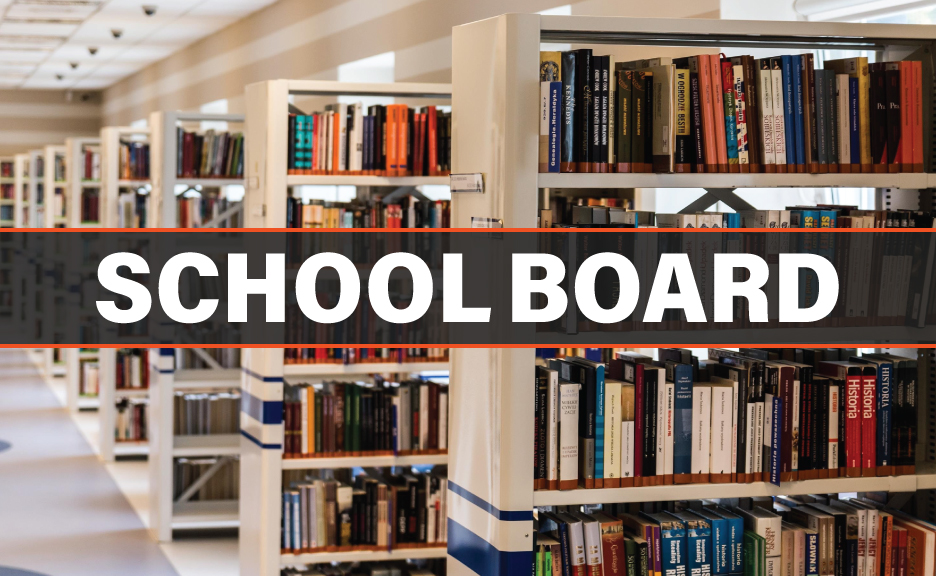By Kelly Kenoyer
Lebanon Local
Just as COVID numbers started spiking dramatically in Oregon, the state lowered the bar for COVID metrics that would allow schools to re-open.
Although regional cases remain too high for students to return to school, the Lebanon School district is working on plans for re-entry for more students, Supt. Bo Yates told School Board members at their monthly meeting Thursday, Nov. 12. The meeting was held over Zoom and shared via YouTube.
Present were Chair Tom Oliver, Mike Martin, Tammy Schilling and Richard Borden. Todd Gestrin as absent.
Yates told the board that the new metrics give “a lot of leeway before you have to shut your schools down.”
The new metrics are based on a two-week time period rather than three consecutive one-week periods, as was the case previously. On-site instruction for all students can now occur when there are fewer than 50 cases per 100,000 over a 14-day period, rather than 10 per 100,000 each week for three consecutive weeks.
Linn County met the new metric standards in late August and early September, but hasn’t met them since then. Grade schoolers have an even easier mark: on-site and distance learning now involves a 5-8% test positivity rate and 50 to 100 cases per 100,000 over the course of the previous 14 days. Additionally, statewide COVID metrics are no longer relevant to local-level school openings.
Lebanon schools are limited by the COVID case rate of the entire county. Linn County’s case rate was last measured at 145.4 cases per 100,000 in a two-week period, well above the 100 cases-per-capita limit that would have allowed grade school students to begin returning to on-site instruction.
The new metrics will also allow schools to incrementally re-open all the way through high school if the metrics stay below that 100 cases-per-capita number, and that those restrictions are much more doable than the previous metrics were.
But it won’t be easy to get there, even with the more manageable metrics, Yates said. Over the last three two-week periods, Linn County went from 102.7 cases per 100,000 to 117 to 145.4.
“If you’re keeping track of those metrics in Linn County, they are going the wrong way,” he said. “Make sure you’re wearing a facemask, a face covering, and try to get those numbers moving in the right direction.”
With all the changes from the state, Lebanon School District is looking to update its operational blueprint for reentry. Yates hopes to have students attending for the full day, rather than having them come for two hour shifts – that might be more possible than before, as the state has raised the cohort size from 10 to 20.
“I think we can combine some things to have the kids there all at the same time and then work on a Monday through Friday schedule as well,” he said.
The new state guidelines also expand opportunities for limited in-person instruction, with the cohort size doubled to 20 there as well, and with no more cap for the number of students allowed to participate.
“We need to make sure we’re meeting kids’ social and emotional needs,” Yates said of the program.
The operational blueprints are complicated for older students, though.
“For high school, it’s really going to be a challenge for us to come back before the end of the semester. I don’t know if metrics will get us there, but we might have to look at doing distance learning through the end of the semester,” Yates said, adding that limited in-person instruction could fill in the gap with two-hour in person classes.
The problem is the class schedule. High schoolers are doing six periods each day for the semester, which makes cohorting difficult. Next semester may involve four periods a day for a nine week session.

Yates said attendance has improved marginally since the last board meeting, but enrollment is still down by about 400 students, which will cause a $3.5 million shortfall in the budget next year.
Oliver called the attendance numbers “troubling,” and Yates said the district is still trying to get those students back on board, including with home school support.
Board members responded by discussing the possibility of summer school classes or an extended school year to help students recover from the learning gaps caused by COVID-19.
Yates said the failure rate is around 30 percent.
“It’s a challenge, and some of the things we’re doing, we’re trying to adjust and modify to meet the needs of our kiddos,” he said.
“Our summer programs are going to become much more robust, and it’ll look a lot more like we’re doing year-round school than just summer school.”
“We’re asking educators to do six hours of education in three hours, and ultimately there’s got to be a penalty that comes with that,” Oliver said. “We’re seeing some savings on substitutes and other areas, but we need to be prepared to take every dollar we save there and try to expand the school year into the summer to try and win back some of this ground.”
Still, the budgetary shortfall from lowered attendance is a major hurdle, Yates pointed out.
“If we’re looking at $3.5 million, we’re looking at 10 to 15 teachers, 20 classified employees and a couple of administrative positions as well. It would be significant. So we have to be thoughtful and responsible in how we deal with some of those things.”
In other action Thursday:
♦ School Improvement Director Tami Volz provided a STAR assessment report on student test scores, noting that this semester’s tests may be impacted by their remote nature. Test participation was down significantly, and 15 to 20 percent of students weren’t tested.
“We did not do terrible in comparison to the prior years,” she said.
For reading, 39.4% of tested second- through ninth-grade students are at or above national 50th percentile during pre-pandemic norms. In math, 41.8% of tested second- through ninth-grade grade students are at or above national 50th percentile during pre-pandemic norms. Math dropped 2.1% from last year, though reading has improved by 2.7%.
Yates said the impact of six months on test scores of online learning impacted wasn’t a surprise.
“We took a big step back. It’s nothing we didn’t anticipate. But the question now is, now what?”
♦ Business Director William Lewis gave the board an update on the new construction excise tax, which board members approved in March. The tax on new residential construction in Lebanon allows the district to collect $1.25 per square foot.
The tax was approved by the Linn County Board of Commissioners, Lewis said, so the school board will be able to sign the finalized agreement at the next board meeting.
“It will likely be the new year, beginning of January when we can begin collecting on those,” Lewis said.
Oliver said he was glad.
“The City of Lebanon had one of the busiest summers in terms of permitting construction, so we’ll see if that continues.”
♦ Yates told the council that the high school’s building construction class will build a new pre-school for the district once it finishes its current project, a duplex. The funds from the sale of that building will go towards funding the next project, which will be built on land between the district’s main building and the Boys and Girls Club. It’ll be a 70- by 70-foot building with a playground area nearby.
“We are trying to invest a little bit back into our community and our kids,” Yates said. “If you look at where our kinders are coming in, Linn County is fairly low and we’re fairly low in Linn County, and there’s no reason for that.”
♦ The council decided not to vote on an Oregon School Boards Association resolution to adopt the OSBA 2021-2022 legislative priorities and principals.
Oliver said the document “is a lot of words that don’t really say anything” and questioned why it doesn’t include anything about COVID-19. Martin criticized it for having the same information as previous years, such as stable funding, without much change.
♦ The board unanimously approved a Student Investment Account Grant agreement.
Assistant Supt. Jennifer Meckley said, “We knew we would get about 30%,” and the leadership chose priorities once it had that information.
The allocation from the SIA funds were reduced from nearly $3.4 million to $1,079,043.64. The resulting SIA plan kept two mental health therapists, which have “made a huge positive impact,” Meckley said, as well as 13 kindergarten instructional assistants, a bilingual community liaison and a bilingual assistant, translation services, summer school, and a pre-K transition program.
Items removed from funding included a CTE teacher, and SpEd instructional assistants, as well as instruments for the music program.
Some of the items that were reduced off the SIA plan are now in the general fund, like the assessment coordinator, SpEd teacher, and engagement coordinator.
Oliver said he’s concerned about the TOSAs being reduced from the budget, but noted that those behavior and equity focused positions aren’t as effective in remote learning anyway.
“You’ve done a good job,” he said.
The next steps with the grant involve a public comment period, followed by submission of the grant agreement to the state. The state has given districts a little more time because of COVID, Meckley said, and the first disbursement will come after the grant agreement is sent.
♦ The board approved the consent agenda, including some new policies related to sexual harassment and title IX, among others.
♦ Human Resources director Kim Grousbeck told the board she’s working with the 31 high-risk employees who work for the district to determine how they can fit in if students come back.
“We’re looking at home school support or distance support continuing that so we have a teacher at each grade level.”
♦ Lewis gave the board an update on the Seismic Rehab Grant Program, which involves a seismic project at the Lebanon High School gym. He said they’ve hired HMK Company as the construction manager, and they’re in the process of hiring a design firm and will have a pre-proposal meeting Nov. 13 to discuss the plans.





